- Home
- Robert E. Howard
Bran Mak Morn: The Last King Page 31
Bran Mak Morn: The Last King Read online
Page 31
In this story Howard clearly links his imaginary pre-Cataclysmic world of Kull to our own historical world. The wizard, Gonar, tells Bran that he is a descendant of Brule the Spear-slayer, and tells how only the Picts survived the cataclysm that claimed Valusia, Atlantis, and Lemuria, that they won up the ladder again to civilization before being overrun by the Celts and again �urled into savagery.��ere in Caledon,�he says, �s the last stand of a once mighty race. And we change. Our people have mixed with the savages of an elder age which we drove into the North when we came into the Isles, and now, save for their chieftains, such as thou, Bran, a Pict is strange and abhorrent to look upon.� The Dark Man, set some eight centuries after Kings of the Night, makes clear that Bran� initial triumph, while it forged the Picts into a united nation and enabled them for a time to keep the Romans south of the Wall, was ultimately in vain. �ran Mak Morn fell in battle; the nation fell apart. Like wolves we Picts live now among the scattered islands, among the crags of the highlands and the dim hills of Galloway. We are a fading people. We pass.� Some observers have noted the strong correspondences between Howard� poem, The Song of a Mad Minstrel, and Rudyard Kipling� A Pict Song, from his book Puck of Pook� Hill, and suggested that Kipling� tale, in that book, of the British Roman Parnesius and his struggle to hold the Wall of Hadrian against the Picts and Northmen during the reign of Maximus may have been an influence on Howard� Bran Mak Morn tales. It is a tempting hypothesis, with some strong circumstantial evidence. For instance, Howard� poem, with lines like � am the thorn in the foot, I am the blur in the sight; I am the worm at the root, I am the thief in the night,�clearly echoes Kipling� �e are the worm in the wood! We are the rot in the root! We are the germ in the blood! We are the thorn in the foot!�When we note that The Song of a Mad Minstrel was sold to Weird Tales in March 1930, the same month Howard sold Wright The Dark Man and Kings of the Night, we might be excused for thinking it more than coincidence. Add to this the fact that in Kipling� tale of Parnesius, he has him making tentative alliances with Picts and Norsemen who are threatening the Wall, to try to hold them from attacking until Maximus is able to triumph in Gaul and return the legions he has taken with him, seeming to echo the plot line outlined in Howard� Bran synopsis, and the case seems even stronger. However, Kipling� Picts (which he, like Machen, refers to as �ittle People� are far from being Howard� (�icts seldom fight,�Parnesius says. � never saw a fighting Pict for half a year. The tame Picts told us they had all gone North.�, and none of the particulars of Howard� tales seem to suggest a linkage with Kipling�.
During the summer of 1930, Howard began a correspondence with the great weird fictionist H.P. Lovecraft. Among the earliest exchanges was a discussion which directly bears upon Howard� treatment of the Picts. Lovecraft, saying that he believed it probable that if there were any human inhabitants of the British Isles before the coming of the Mediterraneans, they were not cavemen or savages, but possibly �ome of the squat Mongoloids now represented by the Lapps,�wrote:
�t� true that the Celts share most vigorously the myth-cycle of fairies, gnomes, & little people, which anthropologists find all over Western Europe... & attribute to vague memories of contact with the Mongoloids.... Since these fair Nordic Celts found a smaller, darker race in Britain & Ireland, there is a tendency on the part of some to be misled, & to assume that the �ittle people�legends allude to contact with those dark aborigines. This, however, can be clearly disproved by analysis of the myths; for such myths invariably share with the parallel Continental myths the specific features (or tracks of these features) of having the �ittle people�essentially repulsive & monstrous, subterraneous in their habits of dwelling, & given to a queer kind of hissing discourse. Now this kind of thing does not apply to Mediterraneans - who are not abnormal or repulsive from the Nordic standpoint (being very similar in features), who did not live underground, & whose language... could scarcely have suggested hissing.�
Howard replied:
�our observations regarding the Mongoloid aborigines and their relation to the fairy-tales of western Europe especially interested me. I had supposed, without inquiring very deeply into the matter, that these legends were based on contact with the earlier Mediterraneans, and indeed, wrote a story on that assumption which appeared some years ago in Weird Tales - �he Lost Race.�I readily see the truth of your remarks, that a Mongoloid race must have been responsible for the myths of the Little People, and sincerely thank you for the information.� Howard almost immediately put this new �nowledge�to use, in The Children of the Night, which he sold to Weird Tales in October 1930, less than two months after the above exchange. In the opening scene of this story, several scholars are having a bull session in the library of a man named Conrad. The discussion turns to the Nameless Cults of Von Junzt, and the author� contention that the �ran cult�is still active.
�But when Von Junzt speaks of Picts, he refers specifically to the small, dark, garlic-eating peoples of Mediterranean blood who brought the Neolithic culture into Britain. The first settlers of that country, in fact, who gave rise to the tales of earth spirits and goblins.� �I can not agree to that last statement,�said Conrad. �hese legends ascribe a deformity and inhumanness of appearances to the characters. There was nothing about the Picts to excite such horror and repulsion in the Aryan peoples. I believe that the Mediterraneans were preceded by a Mongoloid type, very low in the scale of development, whence these tales-� �Quite true,�broke in Kirowan, �ut I hardly think they preceded the Picts, as you call them, into Britain. We find troll and dwarf legends all over the Continent, and I am inclined to think that both the Mediterranean and Aryan peoples brought these tales with them from the Continent. They must have been of extremely inhuman aspect, these Mongoloids.�
From this point on, Howard� degenerated race of underground dwellers are no longer identified with the Picts, as they had been in The Little People. In fact, in Children of the Night, when the narrator, O�onnel, is recalling a past life as Aryara, he says of the abhorrent race his people called �he Children of the Night,��hey had once overrun and possessed this land, and they had been driven into hiding and obscurity by the dark, fierce little Picts with whom we contested now, and who hated and loathed them as savagely as did we.� In People of the Dark, written in 1931, Howard makes clear that The Little People and Children of the Night are the same. In this story, too, we learn of an object they worship:
�n the center of the chamber stood a grim, black altar.... Towering behind it on a pedestal of human skulls, lay a cryptic black object, carven with mysterious hieroglyphics. The Black Stone! The ancient, ancient Stone before which, the Britons said, the Children of the Night bowed in gruesome worship, and whose origin was lost in the black mists of a hideously distant past. Once, legend said, it had stood in that grim circle of monoliths called Stonehenge, before its votaries had been driven like chaff before the bows of the Picts.� The People of the Dark was returned to Howard by Strange Tales in September 1931, with a request for revisions. It was probably between that date and February 1932 that he wrote the story in which all these elements at last came together, a story that is generally regarded by most Howard fans as one of his very best, Worms of the Earth.
H.P. Lovecraft, memorializing his friend, said, �t is hard to describe precisely what made Mr. Howard� stories stand out so sharply; but the real secret is that he himself is in every one of them....�The best of Howard� tales are centered squarely on the viewpoint character. This is why Worms of the Earth is by far the best of the Bran Mak Morn stories: it is the only one in which Bran is not seen through the eyes of another character. Howard himself recognized this, writing to Lovecraft shortly after this story was accepted:
�y interest in the Picts was always mixed with a bit of fantasy �that is, I never felt the realistic placement with them that I did with the Irish and Highland Scotch. Not that it was the less vivid; but when I came to write of
them, it was still through alien eyes - thus in my first Bran Mak Morn story �which was rightfully rejected �I told the story through the person of a Gothic mercenary in the Roman army; in a long narrative rhyme which I never completed, and in which I first put Bran on paper, I told it through a Roman centurion on the Wall; in �he Lost Race�the central figure was a Briton; and in �ings of the Night�it was a Gaelic prince. Only in my last Bran story, �he Worms of the Earth�which Mr. Wright accepted, did I look through Pictish eyes, and speak with a Pictish tongue!�
This would also prove to be the last Bran Mak Morn story Howard would write. In the same letter (dated March 10, 1932) in which Weird Tales editor Wright told Howard, � want to schedule WORMS OF THE EARTH soon, for that is an unusually fine story, I think,�he had returned two other stories, asking for revisions to one: these were The Frost-Giant� Daughter and The Phoenix on the Sword, the first tales of a Cimmerian adventurer named Conan who would dominate Howard� fiction for the next three years. The Picts were, of course, present in Conan� prehistoric �yborian Age� they were the hereditary enemies of the Cimmerians, who were themselves descendants of the pre-Cataclysmic Atlanteans of Kull. The Pictish wilderness stretched from the western borders of Aquilonia to the sea, and it is on that border that one of Howard� finest Conan tales, Beyond the Black River, is set. Pictish characters also play supporting roles in two of the James Allison stories, Marchers of Valhalla and The Valley of the Worm. But Bran, having made his foul bargain with the Worms of the Earth, is never heard from again.
It is tempting to see in Bran Mak Morn an autobiographical representation of Robert E. Howard. More so than any other of his characters, Bran feels the heavy weight of personal responsibility for his people, much as one suspects Howard must have felt toward his aging parents, especially his sickly mother. Bran knows that he is the last of his line, as perhaps Howard, an only child, may have felt he was the last of his. And Howard seems to explicitly suggest this connection when he insists upon his undying fascination with the Picts, and says �ad I grown into the sort of a man, which in childhood I wished to become, I would have been short, stocky, with thick, gnarled limbs, beady black eyes, a low retreating forehead, heavy jaw, and straight, course black hair �my conception of a typical Pict.�Of course, Howard is at some pains to show us that Bran Mak Morn differs from the �ypical Pict,�though sharing the characteristics of being small and dark-complected, with dark hair and eyes. This was not, as Howard says, his own type (� was blond and rather above medium size than below�, making it all the more noteworthy that so many of his earliest characters share these features. Howard explicitly states, for instance, that Bran �hysically...bore a striking resemblance to El Borak,�the first character he created, some two years before Bran. His alter-ego in the fictionalized autobiographical novel, Post Oaks and Sand Roughs, is described as a �lack Celt,��pare and gaunt,�a �ark youth.�And he related to H.P. Lovecraft a dream he had had as a child, in which the characters match this description:
� dreamed that I slept and awoke, and when I awoke a boy and a girl about my age were playing near me. They were small and trimly shaped, with very dark skin and dark eyes. Their garments were scanty, and strange to me, now that I remember them, but at the time they were not strange, for I too was clad like them, and I too was small, and delicately fashioned and dark ... Now, as I woke in my dream, this scene was fully familiar to me, and I knew that the boy and the girl were my brother and sister; it was not as if I had merely wakened from a sleep, returning to my natural, work-a-day world. And suddenly in my dream, I began to laugh and to narrate to my brother and my sister the strange dream I had had. And I told them of what �if there was any truth at all in reality �constituted my actual waking life... I told them that my dream had seemed so vivid while dreaming it, that I had actually thought it to be real, and believed myself to be a stocky blond child living a waking life, without knowledge of any other....�(Howard to H.P. Lovecraft, ca. December 1930, in Robert E. Howard: Selected Letters 1923�930, p. 77).
Many of Howard� Pictish characters share another interesting feature: they have names that share either a b/r or g/r consonant pattern. All the chieftains of the Picts have the b/r pattern: Bran, Brule (in the Kull stories), Berula (The Lost Race), Dulborn (The Ballad of King Geraint), Brogar (The Dark Man and Tigers of the Sea), and Brulla (The Night of the Wolf), while more �rimitive�Picts generally have names with a g/r pattern, such as Grom, Gonar, Grok, and Grulk, or names that fit neither pattern. However, the b/r pattern is not reserved to Picts alone: such characters as El Borak, Turlogh O�rien, Iron Mike Brennon, and Steve Bender also fit the b/r pattern and are short, dark-featured, or both. All, like the Picts, are from early in Howard� writing career. El Borak, as we have said, actually predates Bran.
What this suggests is that the b/r naming pattern, and even more so the seeming identification with small, dark-featured characters, may have had roots in strong and lasting unconscious patterns, and that Howard� admiration for the Picts, leading him to adopt them �s a medium of connection with ancient times,�may have stemmed from something prior to his discovery of the Pictish race and creation of Bran, possibly predating even El Borak. But while he created many characters who shared these features, he rarely adopted them as his viewpoint characters (even the earliest El Borak stories are generally told through his associates), until he was able to ally his strong emotional connection and storytelling skills in Worms of the Earth, following which he wrote no further tales of Bran.
Interestingly, then, after Worms of the Earth no Pictish character fits the b/r pattern: we have Teyanoga (Wolves Beyond the Border; in the first draft his name was �arogh� and Zogar Sag (Beyond the Black River) in the Conan series, and in these stories (and The Black Stranger) the Picts are primarily howling savages; and in the James Allison tales we find a Kelka (Marchers of Valhalla) and Grom (The Valley of the Worm), both blood brothers to the AEsir heroes, during an era when the Picts seem to be jungle-dwellers. Even the great chieftain of �he Hyborian Age,�who, five hundred years after Conan, leads the Picts in overthrowing the Hyborian kingdoms and establishing an empire, while dark-skinned, dark-haired, and dark-eyed, is named �orm.�In other words, Worms of the Earth seems to be the last story in which Howard felt a really personal connection with the Picts, the first and last time he would �ook through Pictish eyes, and speak with a Pictish tongue!�
NOTES ON THE ORIGINAL HOWARD TEXTS
The texts for this edition of Bran Mak Morn: The Last King were prepared by Rusty Burke and David Gentzel, with the assistance of Glenn Lord. The stories have been checked either against Howard� original manuscripts and typescripts, copies of which were provided by Lord, or the first published appearance if a manuscript or typescript was unavailable. Every effort has been made to present the work of Robert E. Howard as faithfully as possible.
Deviations from the original sources are detailed in these textual notes. In the following notes, page, line and word numbers are given as follows: 11.20.2, indicating page 11, twentieth line, second word. Story titles, chapter numbers and titles, and breaks before and after chapter headings, titles, and illustrations are not counted; in poems, only text lines are counted. The page/line number will be followed by the reading in the original source, or a statement indicating the type of change made. Punctuation changes are indicated by giving the immediately preceding word followed by the original punctuation.
We have standardized chapter numbering and titling: Howard� own practices varied, as did those of the publications in which these stories appeared. We have not noted those changes here.
Men of the Shadows
Text taken from Howard� typescript, provided by Glenn Lord. In the typescript, the poem that opens the story is not divided into stanzas. 3.15.3: no apostrophe after �ges� 3.18.6: no apostrophe after �ons� 4.14.5: no comma after �elmets� 5.1.6: thrusts, ; 5.11.9: dissappeared; 5.16.9: men, ; 6.5.9: breat-plate; 6.7.8: up slash
ing; 6.18.5: in the typescript, it appears that several words have been erased between �nd�and �he� with a comma following the erased words; 6.25.13: together, ; 6.35.6: least, ; 6.36.8: hilt, ; 7.5.3: sky towering; 7.10.4: weilded; 7.35.2: lieing; 8.6.10: semicolon after �and� 8.34.8: acoutrements; 8.35.8: exhultation; 8.35.9: period after �hrilled� 11.11.9: past; 11.19.2: them, ; 11.20.11: war-fare; 12.3.3: posses; 12.10.7: war-locks; 12.18.1: Twas; 12.18.8: war-fare; 12.25.3: appears to be �imw�with �j�typed over the �� 12.34.5: no comma after �houlder� 13.9.14: no comma after �avagely� 13.21.1: no comma after �houlders� 13.23.7: breat; 13.23.12: some one; 13.24.12: chief, ; 13.31.11: features,; 13.32.1: Picts, ; 13.35.4: you. ; 13.35.10: mazed, ; 14.8.4: no comma after �hen� 14.8.5: spen (typed to right edge of paper); 15.4.7: spirit; 15.12.2: frought; 15.12.5: no apostrophe after �ges� 15.13.1: no apostrophe after �ges� 15.22.1: Romans. ; 15.22.3: he, ; 15.27.1: proudly, ; 15.33.4: fools. ; 15.33.6: he, ; 16.7.6: was.; 16.7.8: replied, ; 16.10.10: curiously, ; 16.12.6: his; 16.13.2: glitter, ; 16.14.8: wasteplaces; 16.21.1: chiefs (the word appears to have been originally misspelled and overstruck); 16.25.3: Norseman. ; 16.25.5: said, ; 16.27.3: no punctuation after �im� 16.30.1: horrizon; 16.36.8: tatooed; 16.38.1: snakes; 16.38.4: sparce; 17.4.8: wind. ; 17.5.6: voice, ; 17.7.5: wizard. ; 17.9.7: chief. ; 17.9.10: answered, ; 18.1.6: harsh, ; 18.4.2: �he valley�was inserted between �arkness of�and �bysmal,�the �f�after �alley�not in ts.; 18.6.8: no comma after �lit� 18.8.6: savage. ; 18.8.11: whisper, ; 18.15.3: Picts. ; 18.16.1: tone, ; 19.2.5: chiefs; 19.4.2: disaproving (originally �isaapoving� ��typed over second �� ��typed over ��; 19.8.12: mid-night; 19.15.10: dust; 19.20.7: wizards; 19.23.7: phrase; 19.23.12: war-fare; 19.36.3: gasped, ; 20.1.13: it, ; 20.4.7: swift. ; 20.4.10: wizard, ; 20.19.4: oceans; 20.35.3: councils; 21.8.2: no apostrophe after �ea-snakes� 21.9.5: sea-gulls; 21.10.1: in beginning a new page, ts. has quotation mark before �ow� 21.18.4: up ward; 21.29.3: more, ; 21.29.9: no comma after �t)� 21.37.9: wizards; 22.13.3: no comma after �lit� 22.19.9: them. ; 22.22.8: discourse, ; 22.33.11: Atlantic, ; 23.3.9: the asterisk for the footnote is not at this point in the typescript, but after �unny sea�at 23.29.13; 23.8.6: sky-ward; 23.13.10: devide; 23.20.4: no punctuation after �avage� 23.29.13: asterisk for footnote is at this point in ts.; 23.30.10: thousans; 23 footnote: Note-Sea of Silent Waters-the Pacific Ocean; 24.1.6: �he�not in ts.; 24.8.2: horrizons; 24.10.7: skillfull; 24.16.10: new formed; 24.30.2: the asterisk for the footnote is not at this point in the ts., but at 25.16.2; 24 footnote: Note-Neandertals; 25.5.5: it; 25.11.1: no period in ts. (typed to right edge of paper); 25.15.10: war-fare; 25.16.2: asterisk for footnote is at this point in ts.; 25 footnote: Note-Cro-Magnons; 26.18.9: Alpan; 26.22.9: sword; 26.37.10: war-fare; 27.7.2: wizards; 27.26.2: �ircle (�he�typed above); 27.26.4: beginning. ; 27.26.7: wizard, ; 28.2.1: semicolon after �how� 28.5.5: One; 28.20.3: ints; 28.23.7: no period after �egenerate�(typed to right edge of paper); 29.1.4: holacaust; 29.3.5: wizards; 29.3.7: exhultant; 29.4.3: silence, ; 29.5.6: Appian; 29.10.1: war-fare; 29.15.1: no quotation mark; 29.18.3: nations; 29.28.4: no quotation mark; 29.35.1: ts. is torn, the ��in �or�is missing; 30.3.8: intself

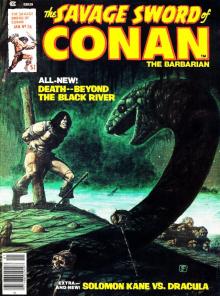 Beyond the Black River
Beyond the Black River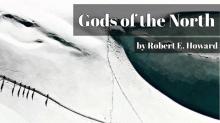 Gods of the North
Gods of the North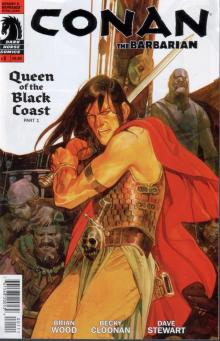 Queen of the Black Coast
Queen of the Black Coast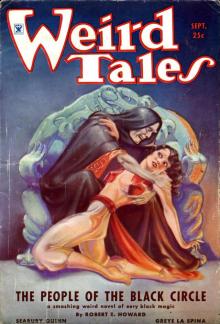 The People of the Black Circle
The People of the Black Circle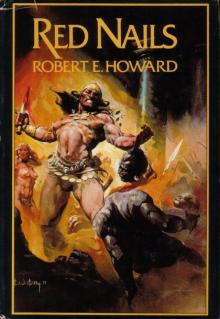 Red Nails
Red Nails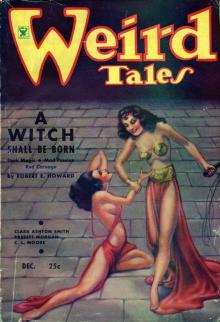 A Witch Shall Be Born
A Witch Shall Be Born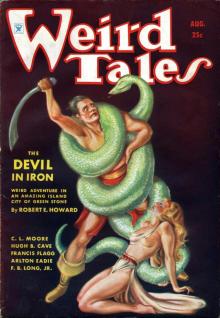 The Devil in Iron
The Devil in Iron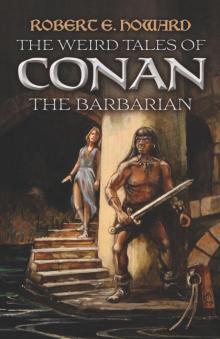 The Weird Tales of Conan the Barbarian
The Weird Tales of Conan the Barbarian The Bloody Crown of Conan
The Bloody Crown of Conan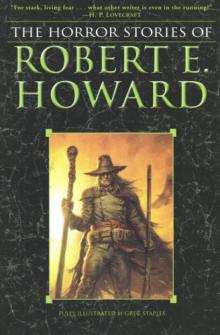 The Horror Stories of Robert E. Howard
The Horror Stories of Robert E. Howard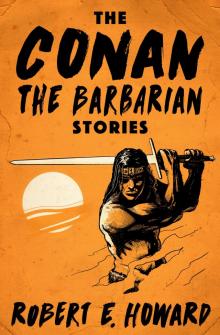 Conan the Conqueror
Conan the Conqueror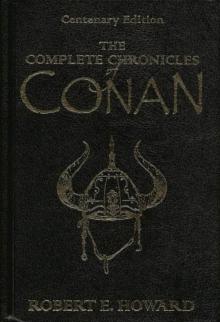 Conan the Barbarian
Conan the Barbarian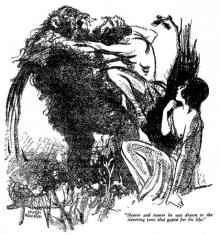 Shadows in the Moonlight
Shadows in the Moonlight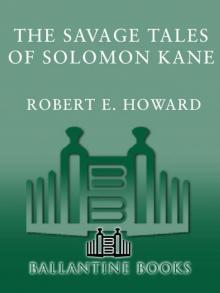 The Savage Tales of Solomon Kane
The Savage Tales of Solomon Kane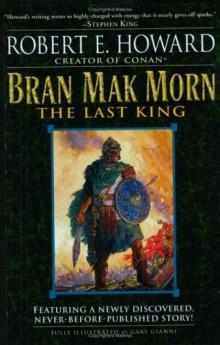 Bran Mak Morn: The Last King
Bran Mak Morn: The Last King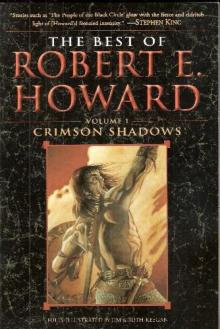 The Best of Robert E. Howard Volume One: Crimson Shadows
The Best of Robert E. Howard Volume One: Crimson Shadows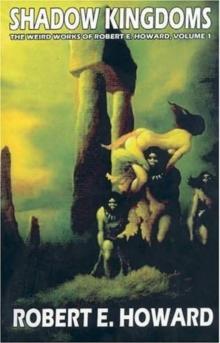 The Best of Robert E. Howard: Crimson Shadows (Volume 1)
The Best of Robert E. Howard: Crimson Shadows (Volume 1)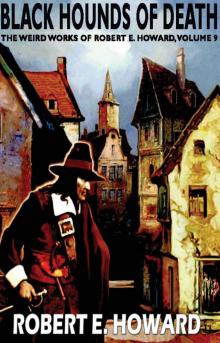 Black Hounds of Death
Black Hounds of Death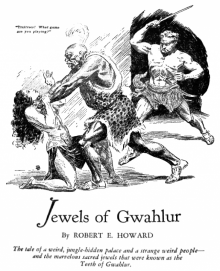 Jewels of Gwahlur
Jewels of Gwahlur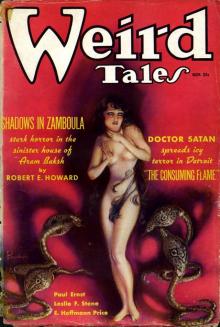 Shadows in Zamboula
Shadows in Zamboula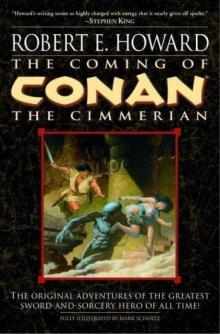 The Coming of Conan the Cimmerian
The Coming of Conan the Cimmerian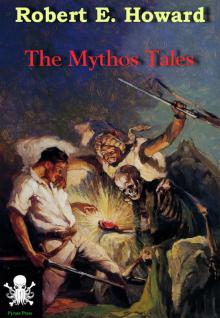 The Mythos Tales
The Mythos Tales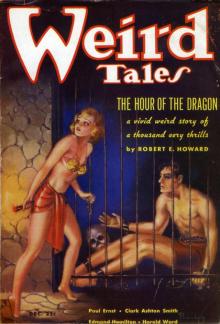 The Hour of the Dragon
The Hour of the Dragon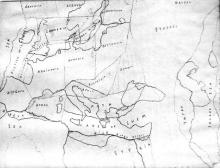 The Hyborian Age
The Hyborian Age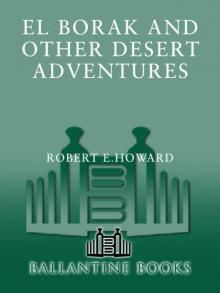 El Borak and Other Desert Adventures
El Borak and Other Desert Adventures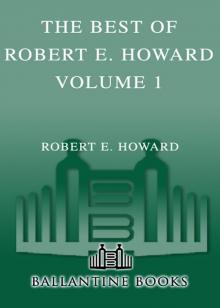 The Best of Robert E. Howard Volume 1 The Best of Robert E. Howard Volume 1
The Best of Robert E. Howard Volume 1 The Best of Robert E. Howard Volume 1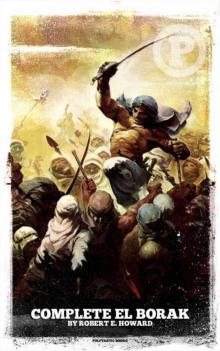 El Borak: The Complete Tales
El Borak: The Complete Tales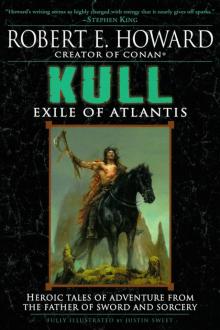 Kull: Exile of Atlantis
Kull: Exile of Atlantis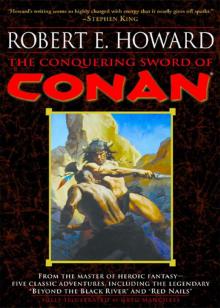 The Conquering Sword of Conan
The Conquering Sword of Conan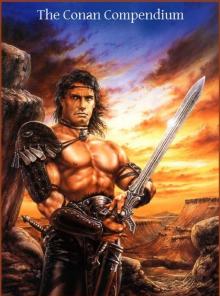 The Conan Compendium
The Conan Compendium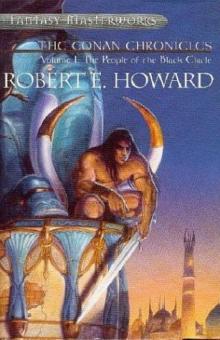 The Conan Chronicles: Volume 1: The People of the Black Circle
The Conan Chronicles: Volume 1: The People of the Black Circle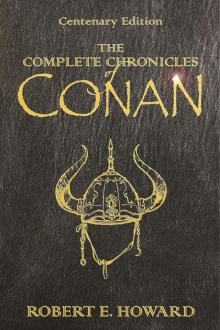 The Complete Chronicles of Conan: Centenary Edition
The Complete Chronicles of Conan: Centenary Edition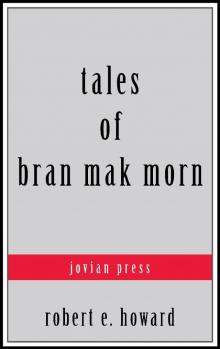 Tales of Bran Mak Morn (Serapis Classics)
Tales of Bran Mak Morn (Serapis Classics)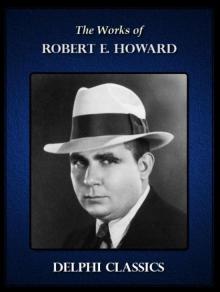 Delphi Works of Robert E. Howard (Illustrated) (Series Four)
Delphi Works of Robert E. Howard (Illustrated) (Series Four)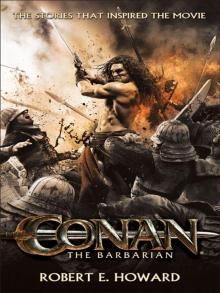 Conan the Barbarian: The Stories That Inspired the Movie
Conan the Barbarian: The Stories That Inspired the Movie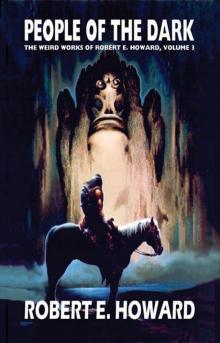 People of the Dark Robert Ervin Howard
People of the Dark Robert Ervin Howard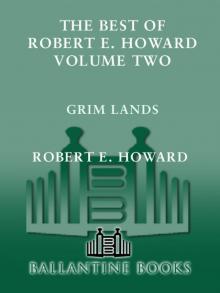 Grim Lands
Grim Lands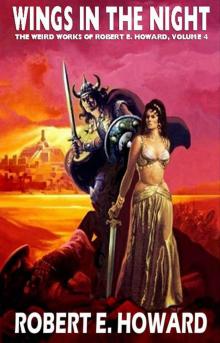 Wings in the Night
Wings in the Night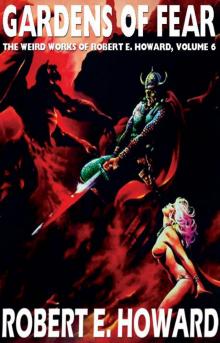 Gardens of Fear
Gardens of Fear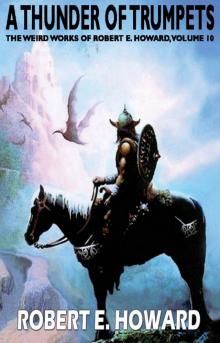 A Thunder of Trumpets
A Thunder of Trumpets Detective of the Occult
Detective of the Occult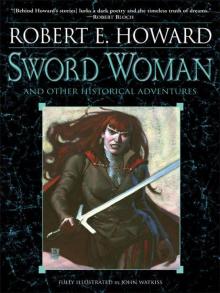 Sword Woman and Other Historical Adventures
Sword Woman and Other Historical Adventures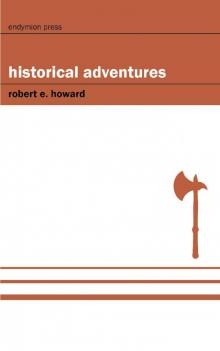 Historical Adventures
Historical Adventures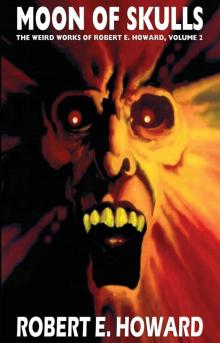 Moon of Skulls
Moon of Skulls The Robert E. Howard Omnibus: 97 Collected Stories
The Robert E. Howard Omnibus: 97 Collected Stories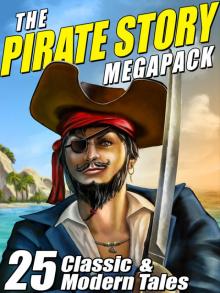 The Pirate Story Megapack: 25 Classic and Modern Tales
The Pirate Story Megapack: 25 Classic and Modern Tales The Best of Robert E. Howard, Volume 2
The Best of Robert E. Howard, Volume 2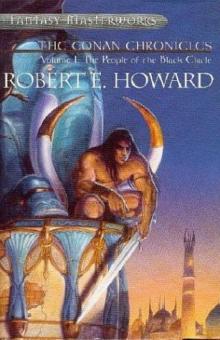 The Conan Chronicles, Vol. 1: The People of the Black Circle
The Conan Chronicles, Vol. 1: The People of the Black Circle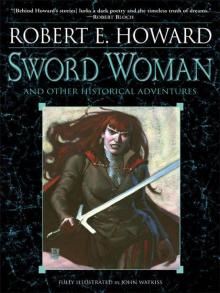 Sword Woman and Other Historical Adventures M
Sword Woman and Other Historical Adventures M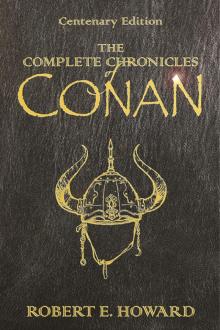 The Complete Chronicles of Conan
The Complete Chronicles of Conan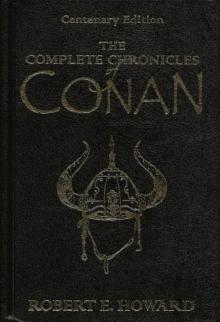 Conan the Barbarian: The Chronicles of Conan (collected short stories)
Conan the Barbarian: The Chronicles of Conan (collected short stories)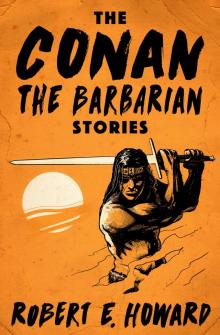 The Conan the Barbarian Stories
The Conan the Barbarian Stories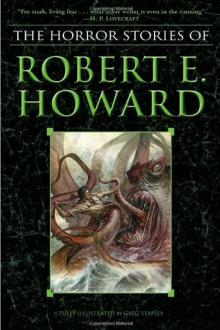 The Best Horror Stories of
The Best Horror Stories of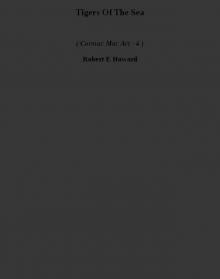 Tigers Of The Sea cma-4
Tigers Of The Sea cma-4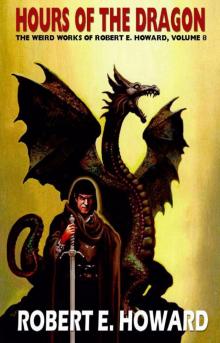 The Hours of the Dragon
The Hours of the Dragon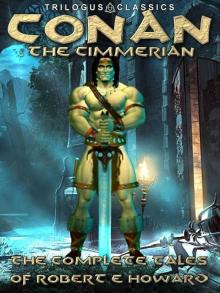 Conan the Cimmerian: The Complete Tales (Trilogus Classics)
Conan the Cimmerian: The Complete Tales (Trilogus Classics)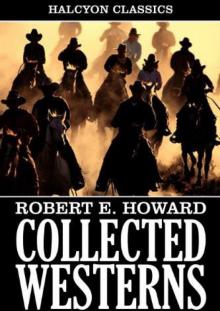 Collected Western Stories of Robert E. Howard (Unexpurgated Edition) (Halcyon Classics)
Collected Western Stories of Robert E. Howard (Unexpurgated Edition) (Halcyon Classics)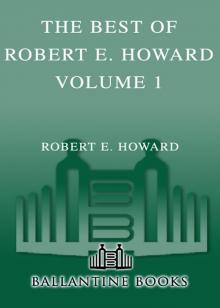 The Best of Robert E. Howard, Volume 1
The Best of Robert E. Howard, Volume 1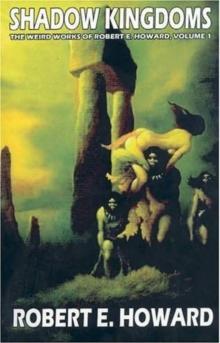 Shadow Kingdoms
Shadow Kingdoms